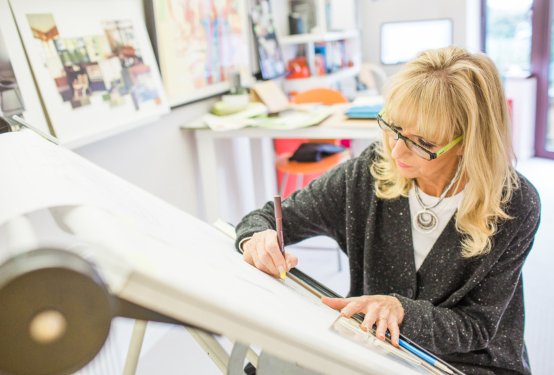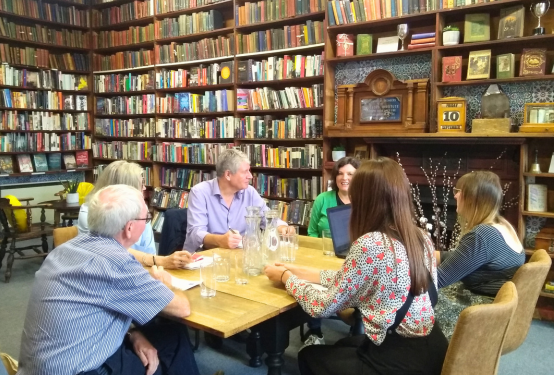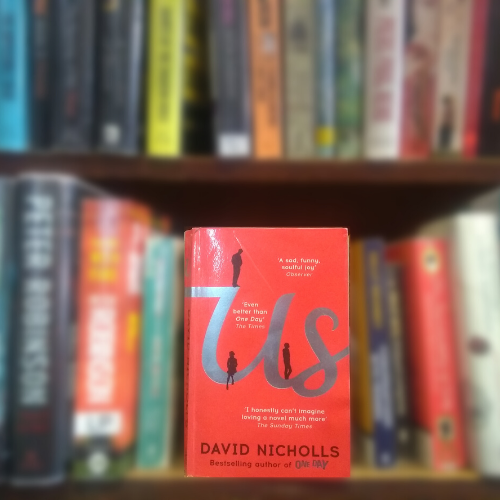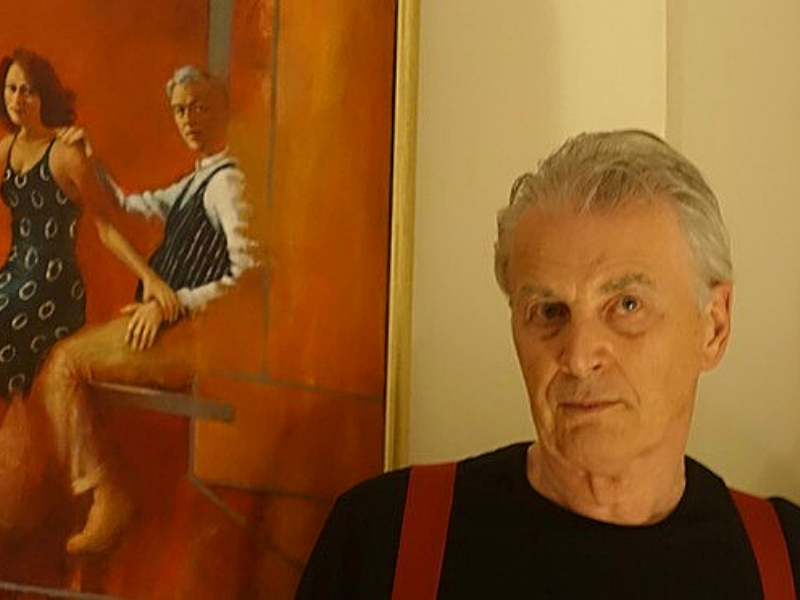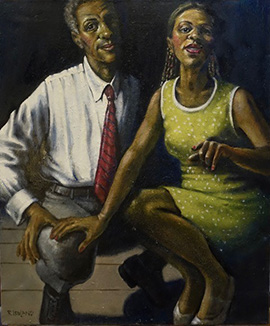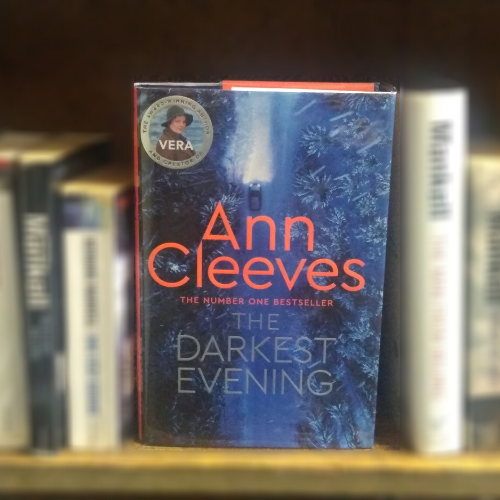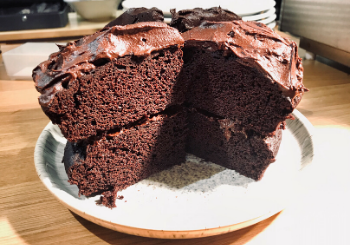Meet one of our newest tutors, professional interior designer Debby Thurston. Having had a varied career working on projects ranging from hotels to listed buildings, Debby currently works as a consultant, on personal projects and lectures. When teaching, she focuses on designs for the everyday home – prioritising budget and practicalities – that ooze individual style.

Tell us about yourself and your background. How did you get into interior design?
Leaving school with just A Levels and no career direction, and then marrying at 21, meant making money, to help support the family, was a priority. Whilst working with interior designers, to set up a shop on the Kings Road, I discovered a really interesting and growing profession that combined my interests in DIY, furnishings and property.
I quickly realised that to succeed, especially in the commercial market, needed good qualifications and I took out a career development loan to study full time at KLC, College of Interior Design. I sold my car and took in a lodger to help finance my studies. I was the only mature student with children and a house to manage, alongside the very demanding course.
I gained honours graduating in 1988 but there was limited work. I needed an income and took on anything I could, working with architects and other interior practices part time for experience. I was also engaged to assist students at the college (KLC) which developed into running courses and lecturing.
Once on my career path, I realised the challenge of working on hotels, retail and hairdressers far more exciting and demanding in standards of creative design. Answering to a brief and the satisfaction of delivering to a team, suited my personal style and talents. However, I saw first-hand how much design success, rested on the build implementation and went back to UCL, (Bartlette Institution) to do an Msc in Construction Refurbishment Management, which gave me a unique qualification. I expanded my projects to include top end domestic, ecclesiastical work, ski chalets, listed buildings in the UK and Dublin and developed my lecturing. It was varied, dynamic and eventually fruitful.

What are your favourite interior design styles and how do you operate?
I don’t have a favourite historical period and have no set style, as I answer to a client’s brief, researching and working with them to achieve their ideals. The decoration and functionality should be designed together. Budget plays a major role, particularly today, with rising costs in labour and materials. Breaking a project into manageable chunks, allows better management and flexibility, as long as there is a defined concept that steers the developing path.
What do you hope students will get out of your courses?
As a lecturer, I explain how to put a decorative scheme together that works with existing items bringing new life to an interior. Good ergonomics and space awareness is based working with a floor plan ‘to scale’. Lighting and colour can be confusing using today’s current technology and needs testing and researching. I explain how to produce a brief and specification, obtaining realistic budgets to help working with your builders and staying in control as a client.

I want people to feel confident they have achieved the best possible for their money that gives longevity, delivers flexibility and enhances their lifestyle. Your interior should ooze your personality and style and serve as retreat from the everyday but open up for a party and family and not just bow to fashion or favoured set styles.
For anyone starting their interior design journey, here are Debby’s myth busters and top tips…

Interior Design Myths
Interior Design is marketed as image being the only goal with limitless money, but I believe in achieving beautiful but workable solutions with the best value for money. Interior decoration and interior design are quite different and often confused. One is more soft furnishings orientated and the other more three dimensional plus décor and similar to architecture. My preferred styles are contemporary biased.
Tips for those starting on a project
My approach and advice is always to take time with the design and prepare before asking a builder for a quote! Attempting a whole house makeover is very complex especially if combined with structural alterations, requiring all the regulations and needs good planning, the right team and realistic budgets. There are always surprises, but minimising ‘extras’ means preparation, although refurbishment is particularly challenging and contingency a ‘must have’.
I am very much looking forward to working at the Guildford Institute, with a new course, some key lectures, giving inspiration and knowledge on Interior Design.
So, if you’d like to boost your interior design confidence and know-how, in a practical and accessible way, Debby’s upcoming courses are perfect for you!

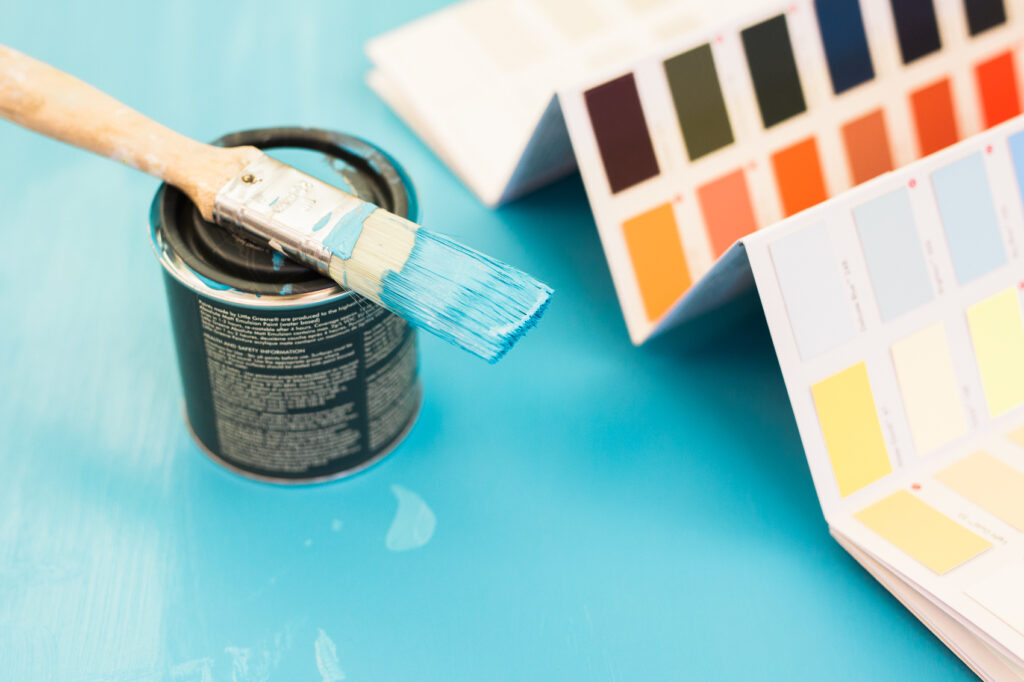
Residential Interior Design: Master the Basics
8 – 28 August (4 Thursdays), 10am – 12pm

Residential Interior Design Workshop: Your Interior Design Scheme
Thursday 11 September, 10am – 1pm

